How Journalists and Archaeologists Searched for the Treasures of an Ancient State — and What They Found
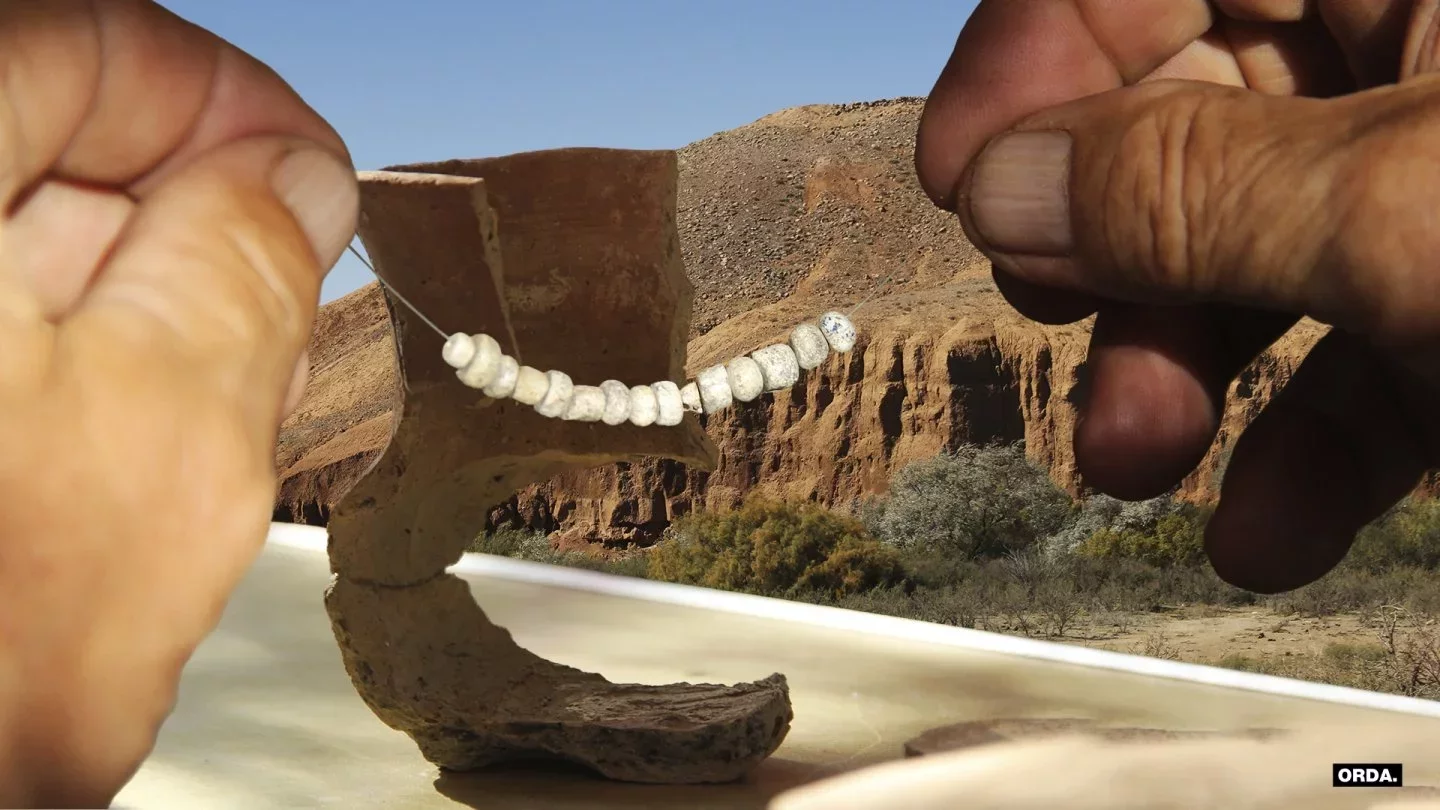 Photo: Orda.kz
Photo: Orda.kz
News of valuable archaeological discoveries in Kazakhstan appears with surprising regularity. So when representatives of the Petroglyph Hunters Foundation invited an Orda.kz journalist to join — even for a short expedition to an excavation site in the Turkistan Region — it was hard to refuse.
A Country with a False Name
The excavation site, known as Qyzylkol, is located near the villages of Qumkent and Qyzylkol in the Turkistan Region. Archaeologists named it after the nearby settlement and lake. Its precise location is being withheld to prevent looting, as illegal diggers continue to target ancient burial sites.
These days there are excavators that can dig three times — and the burial mound is gone,explained Alexander Podushkin, a professor at South Kazakhstan Pedagogical University and head of the SKPU Archaeology Center, who greeted the expedition.
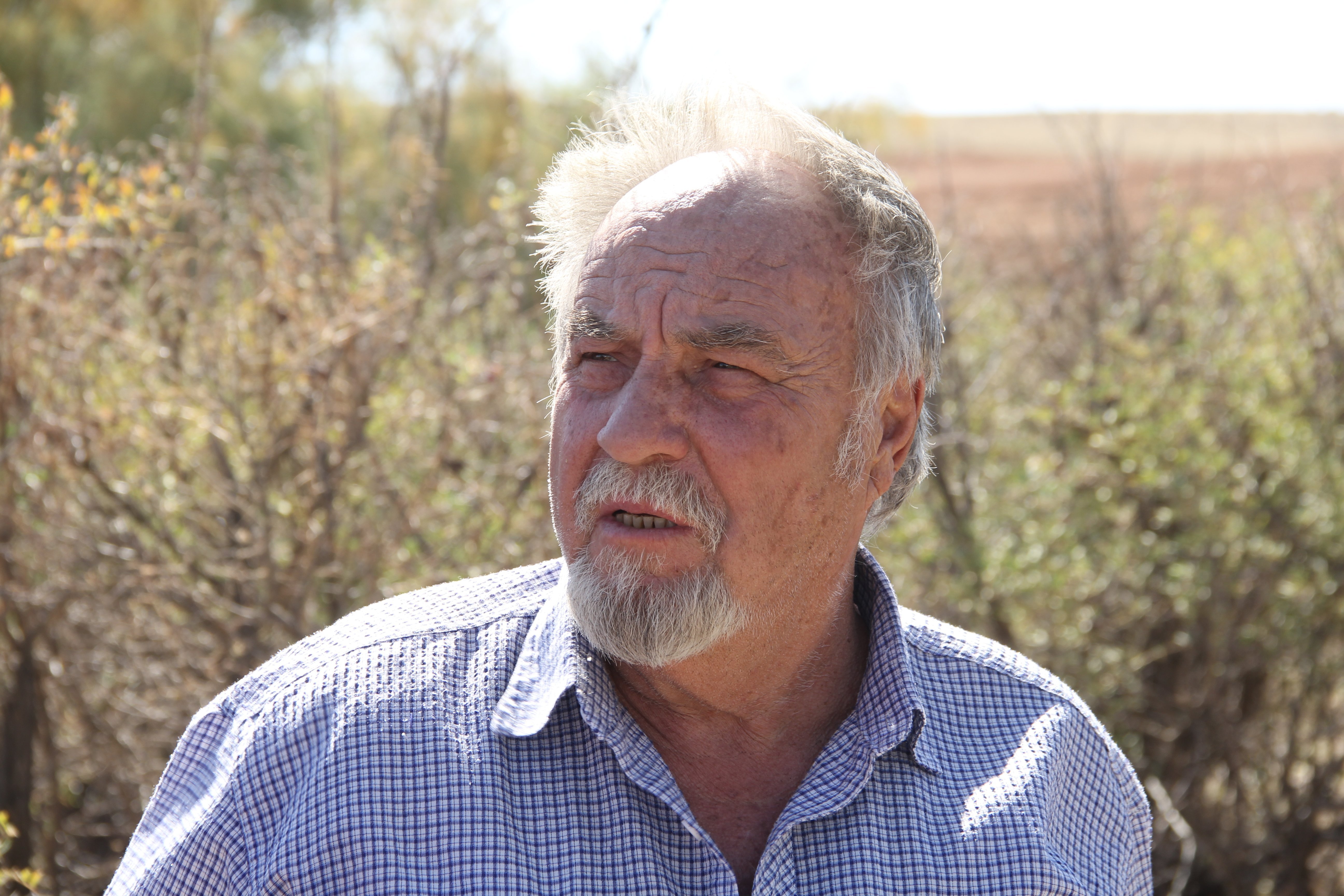
Fortunately, getting to the Qyzylkol is extremely difficult. The road leading there is severe off-road terrain, so the SUVs provided to the participants came in very handy.
Alexander Podushkin calls the Qyzylkol tract an archaeological Klondike. Artifacts have been found in the area around the lake dating from the Stone Age — tens of thousands of years ago — up to the late Iron Age, which includes the Kangju Kingdom.
Archaeologists from SKPU spent nearly the entire month of September excavating remains tied to the Kangju state.
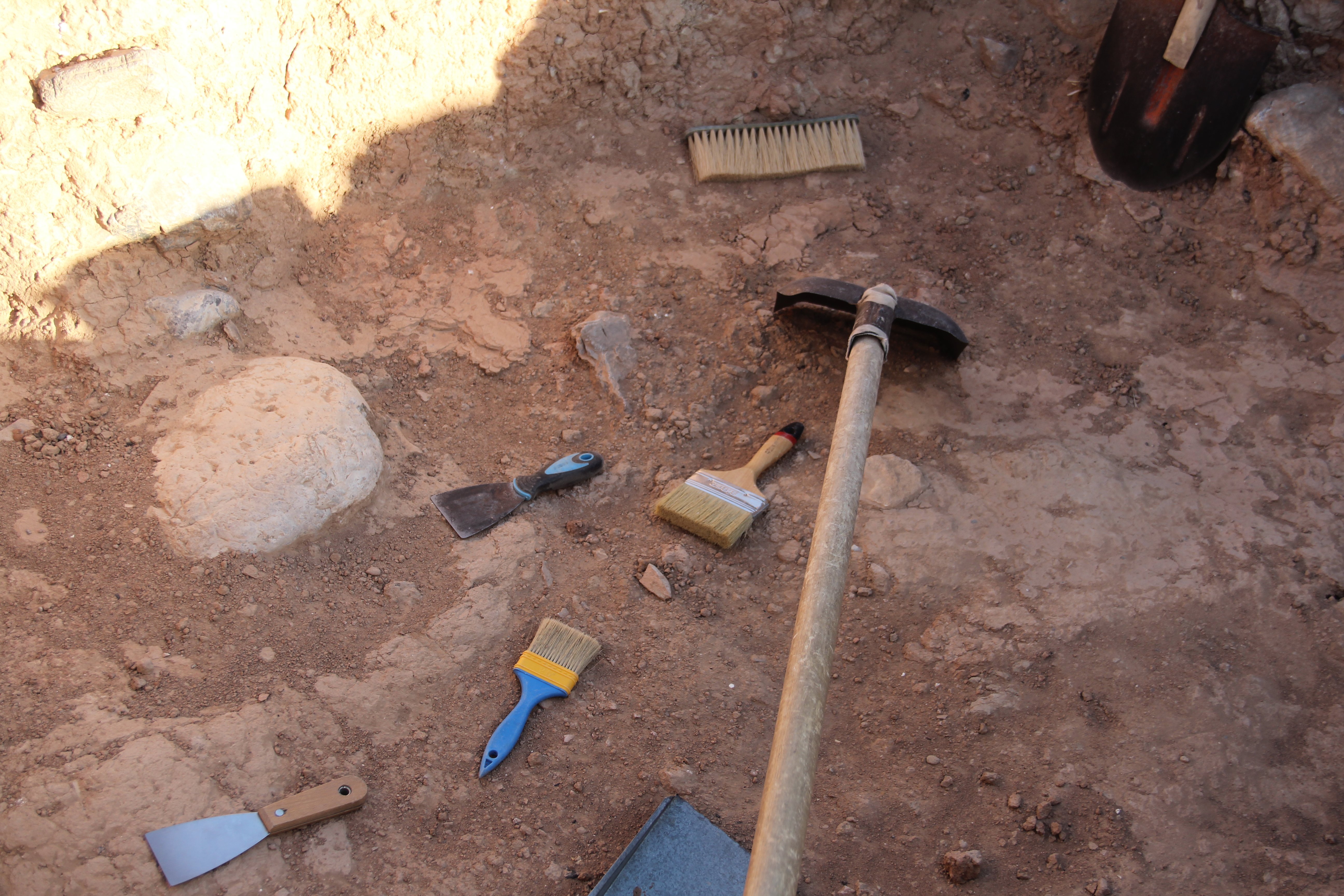
Kangju is a rather mysterious kingdom. On the one hand, much is known about it — from its period of existence, approximately 200 BC to 400 AD, to its written language. Incidentally, Alexander Podushkin discovered this writing, effectively confirming that the inhabitants of Kangju were an Iranian-speaking people.
Yet, it remains unknown what they actually called their country. “Kangju” is a name preserved in Chinese chronicles.
Sun Temple
Our group arrived by the time the excavations were nearly complete. The archaeologists welcoming the guests looked tired but satisfied: the “harvest” of finds had been quite rich.
According to Podushkin, they have been excavating this particular site for about 15 years. In recent years, they have focused on the top of one of the hills, where the remains of an ancient stone structure were found — and not just any structure. Podushkin believes it was a temple, and his argument builds like a detective case.
Fact One. The structure looks nothing like a residential building.
Why do we think it’s a temple? First, because the rooms here are very small, clearly not intended for habitation. Second, if you look at the structure, you’ll see it’s solar—the walls radiate outward from the northern part like a hand fan, like rays, says Podushkin.
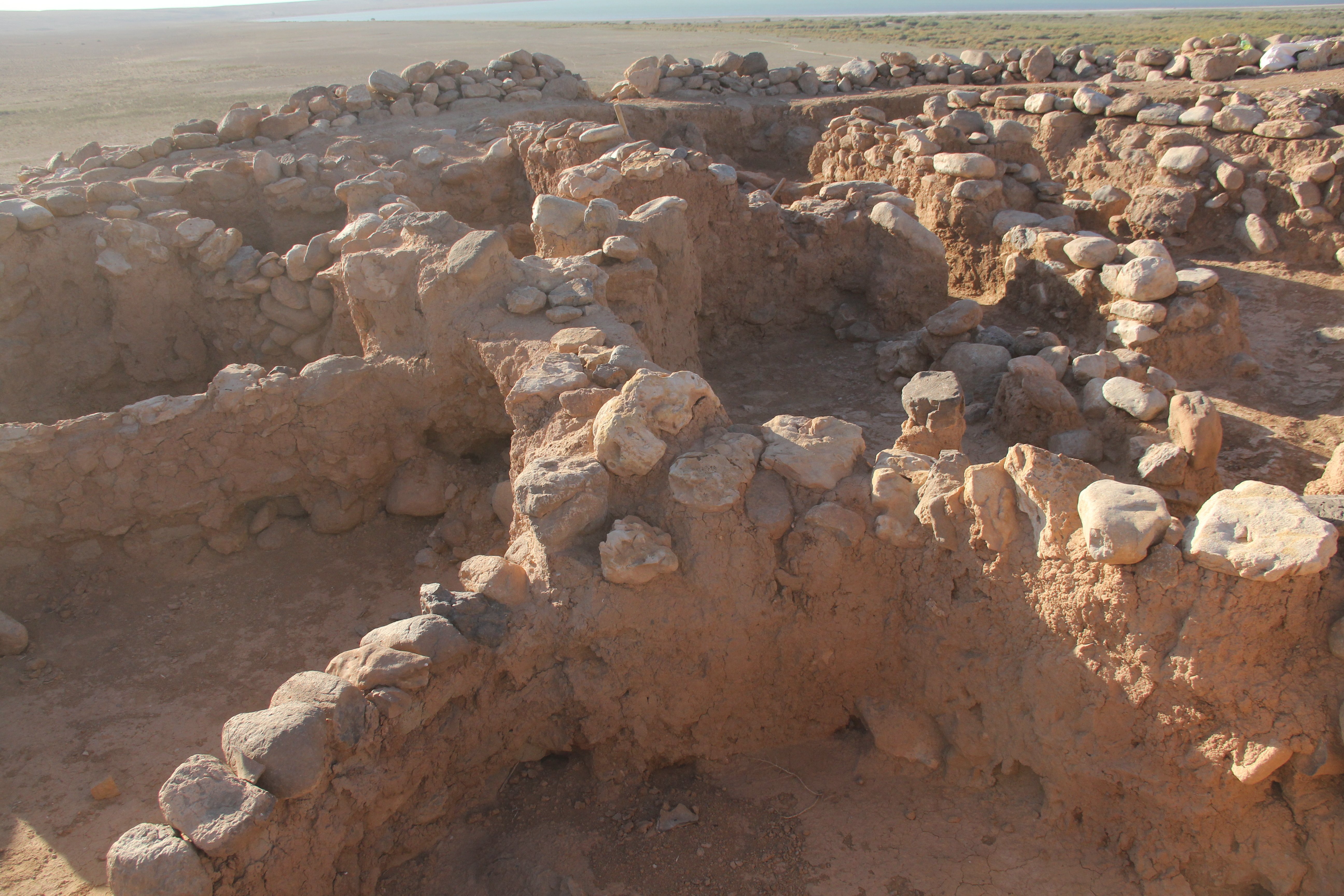
This suggests that the temple was most likely Zoroastrian — or a related cult was practiced there. Sun worship, he notes, could generally be identified with fire worship. Traces of active fire use were also found at the site.
Fact Two. Its location supports the idea of a place of worship: on the top of a hill, near a large body of water in the middle of the Great Steppe. And the hill itself is unusual. It was very likely artificially constructed specifically for the temple. The upper part is noticeably different from the base, even in color.
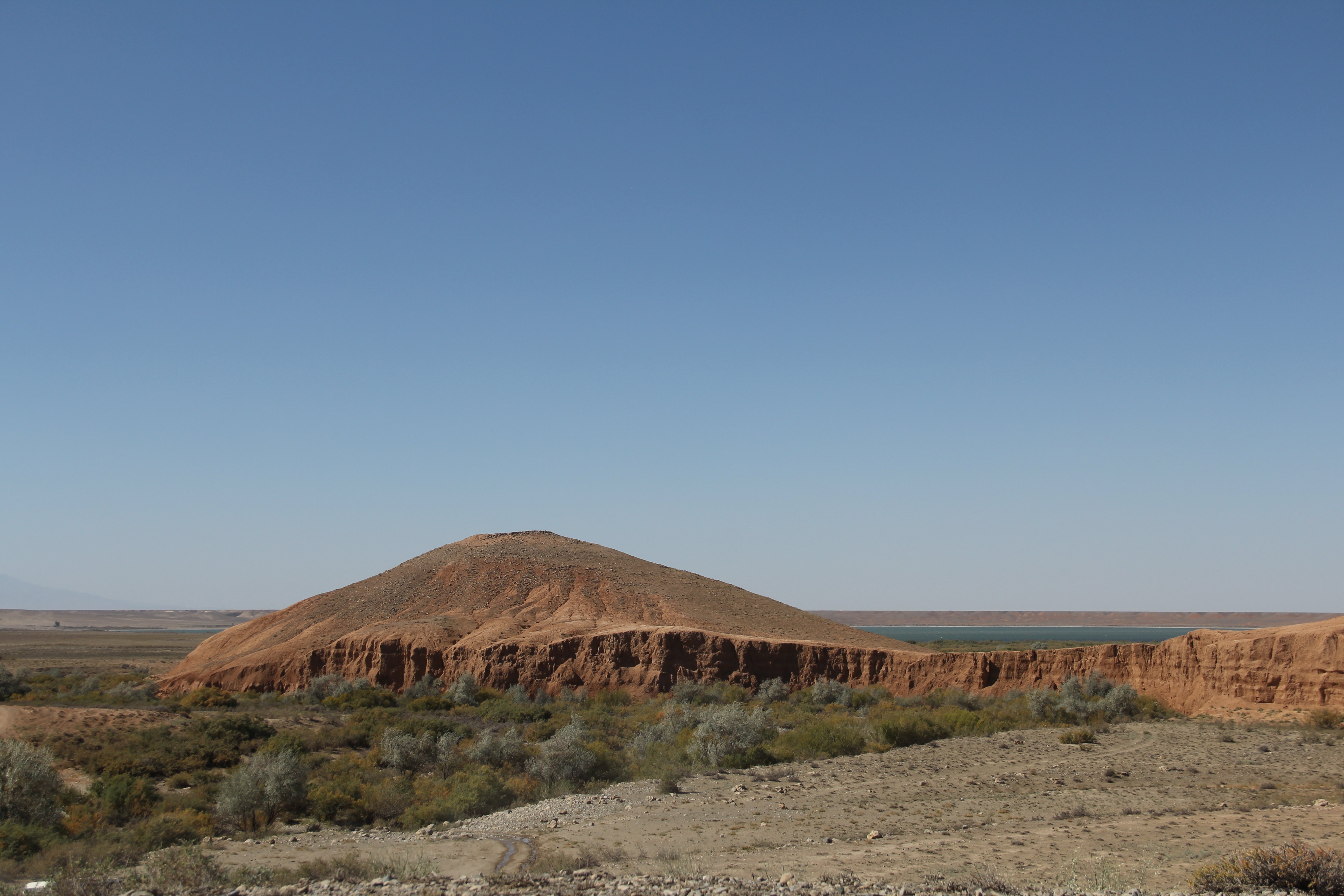
At first, I thought it was natural. But one day, our guys walked along it and called me over: ‘Come and look!’ It turned out that the upper part was artificially constructed and about 50 meters high, said Podushkin.
Naturally, it would be fascinating to see what the temple once looked like.
But even its ruins were forgotten for thousands of years. And yet:
This is the first stone Zoroastrian temple from the Kangju era found in Kazakhstan! Podushkin says this with no small amount of pride.
And there is evidence to support it. Finds from the site — including those unearthed this year — reinforce the conclusion. Among them were the bones of an adult and a child.
Their burial method is characteristic of Zoroastrian practices.
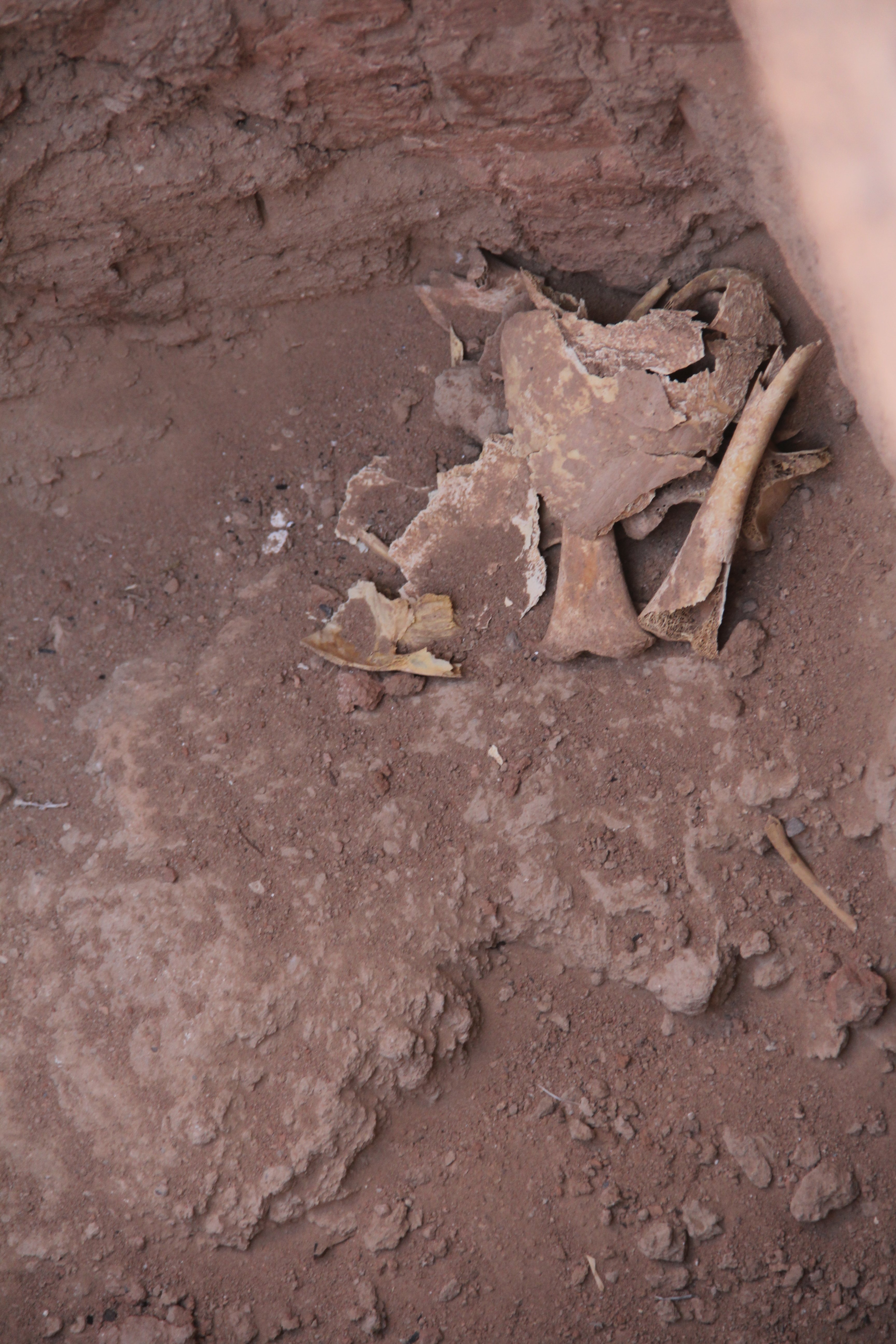
The fact that burials were found in the temple is normal. Over time, when temples fell into disuse, they often began to be used for burials, explained Alexander Podushkin.
In addition to human remains, artifacts and their fragments also indicate that this was a temple. First and foremost is the sheer quantity of broken pottery — an astonishing amount. There are so many clay shards scattered across the hill that at first glance, they could be mistaken for natural stones.
But on closer inspection, they are clearly fragments of pottery. However, this doesn’t mean the clergy were careless. As Podushkin clarified, the vessels were intentionally broken.
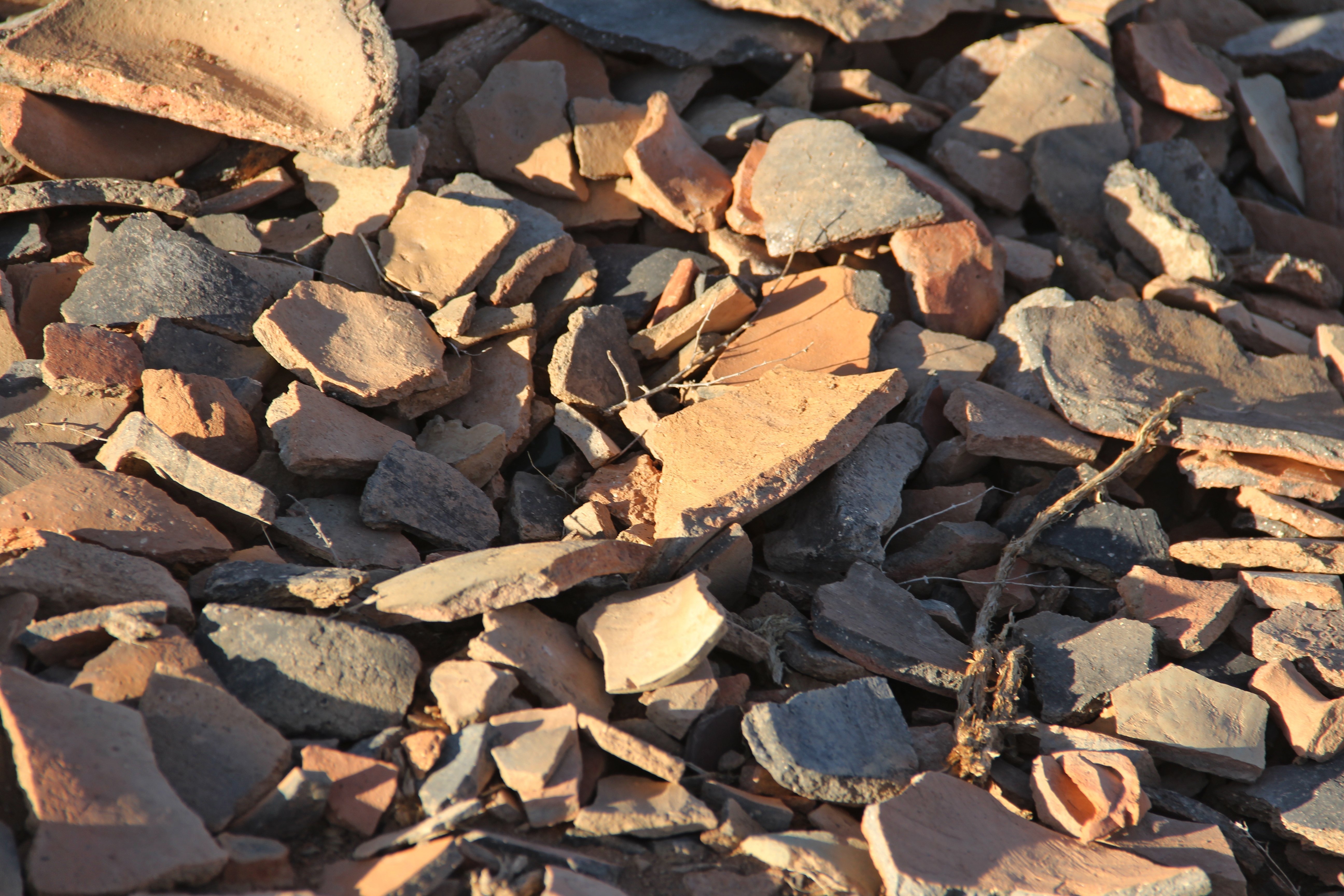
There is such a thing as ritual damage. They intentionally break and damage objects so that more of them will appear later, the archaeologist explains.
Inside the temple itself, archaeologists found the remains of a clay mug, jugs, and other vessels.


Another artifact pointing to the site’s sacred nature is a vessel with four chambers. It was likely an incense burner used for ritual purposes.
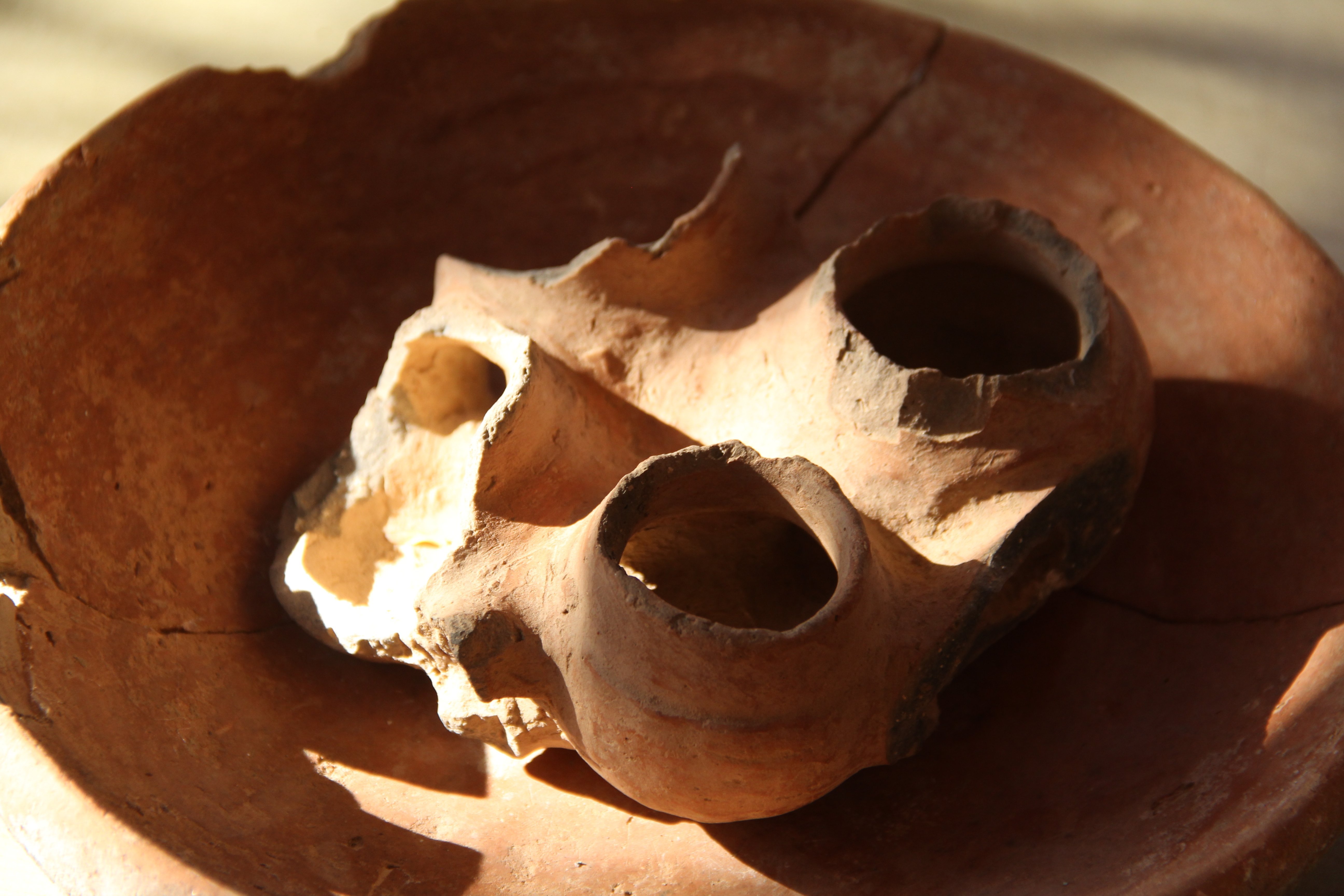
Excavations at the temple are not yet finished. One or two more chambers remain buried underground, still hiding their secrets. The conditions for those uncovering them are difficult. Archaeologists worked in constant wind that whipped up clouds of dust across the sun-worship site.
In general, this area is poorly suited for settlement. It is a barren steppe with almost no fresh water. There is a lake, but it is salty. However, the Kangju period coincides with the so-called Roman Climate Optimum, when the global climate was milder than today.
Perhaps the Kangju people did not live in the dried-out steppe among camel thorn, but in much more favorable conditions.
Fine Work
The archaeologists did not limit themselves to excavating only the temple. Not far from the base of the hill lies what is essentially an ancient cemetery with numerous crypts.
Everything here is very logical. There is a hill where worship took place. A road leads directly from it to the settlement where people lived. That road has survived and is easy to see. And between the temple and the settlement are the crypts, explains Alexander Podushkin.
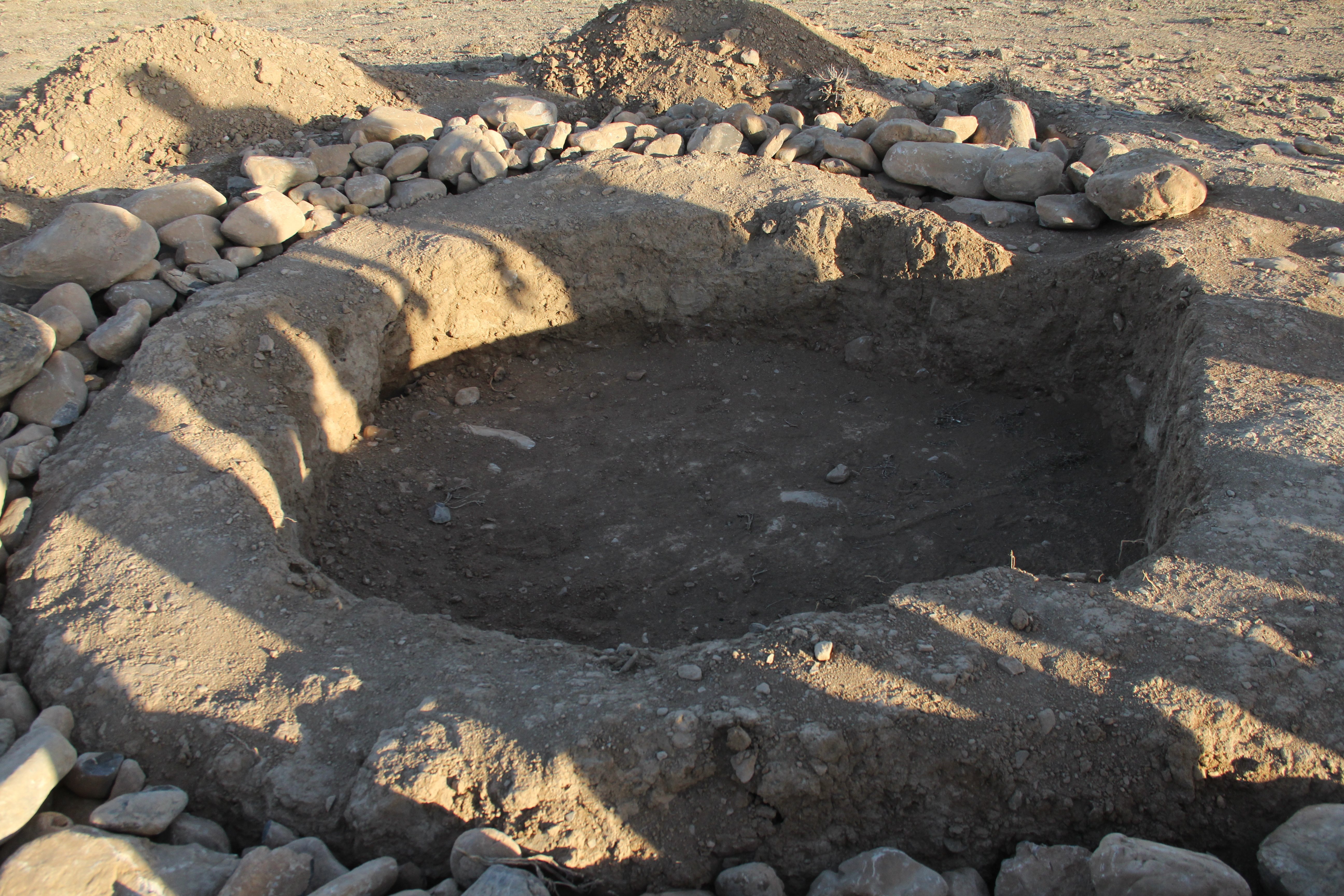
In just over three weeks of work this year, the team uncovered four ancient crypts. Two had already been looted and emptied. Still, even these are of value to researchers.
This one originally had a domed roof. It was similar to a modern mazar, but it collapsed over time. And it was looted back then, almost 2,000 years ago. Robbery often happened in the first days after burial, and it was usually the relatives — because they knew something valuable had been placed inside. said Gulmira Stamkulova, a junior researcher at the SKPU Archaeology Center.
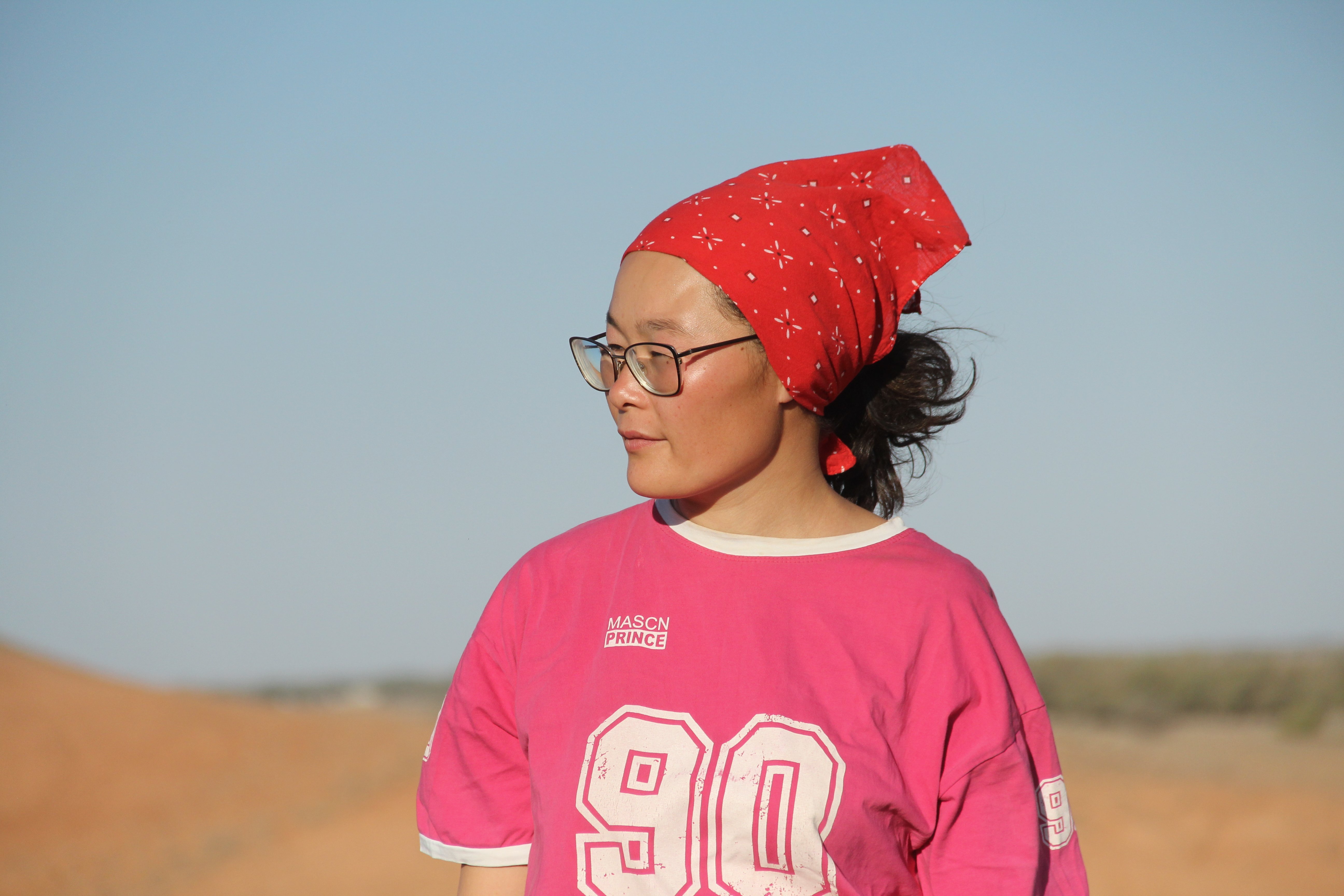
But the other two crypts still contained burials. In both cases, families were interred there. Archaeologists discovered everyday objects from that era — remnants of ceramics, knives, arrowheads, and belt buckles.
There are buckles for men, women, and children. Women also wore leather trousers back then, noted Podushkin.




However, it is not always possible to determine exactly who was buried in each crypt. Everyone owned knives, and many could have used hunting arrows. But occasionally, a discovery sheds light on a burial.
And this September expedition produced just such a find.
Look, this is a crucible used for smelting precious metals. We found it in one of the crypts. Tools were usually buried with the deceased. So here, we can confidently say that a jeweler’s family was buried in this crypt — the man himself, his wife, and their child, said Podushkin.
A jeweler’s crucible is a small clay vessel no larger than a walnut. Had archaeologists not found it, the jeweler’s identity would have remained unknown.
Podushkin suggests that precious metal items may have been produced at the temple itself, because a similar crucible had previously been found there.
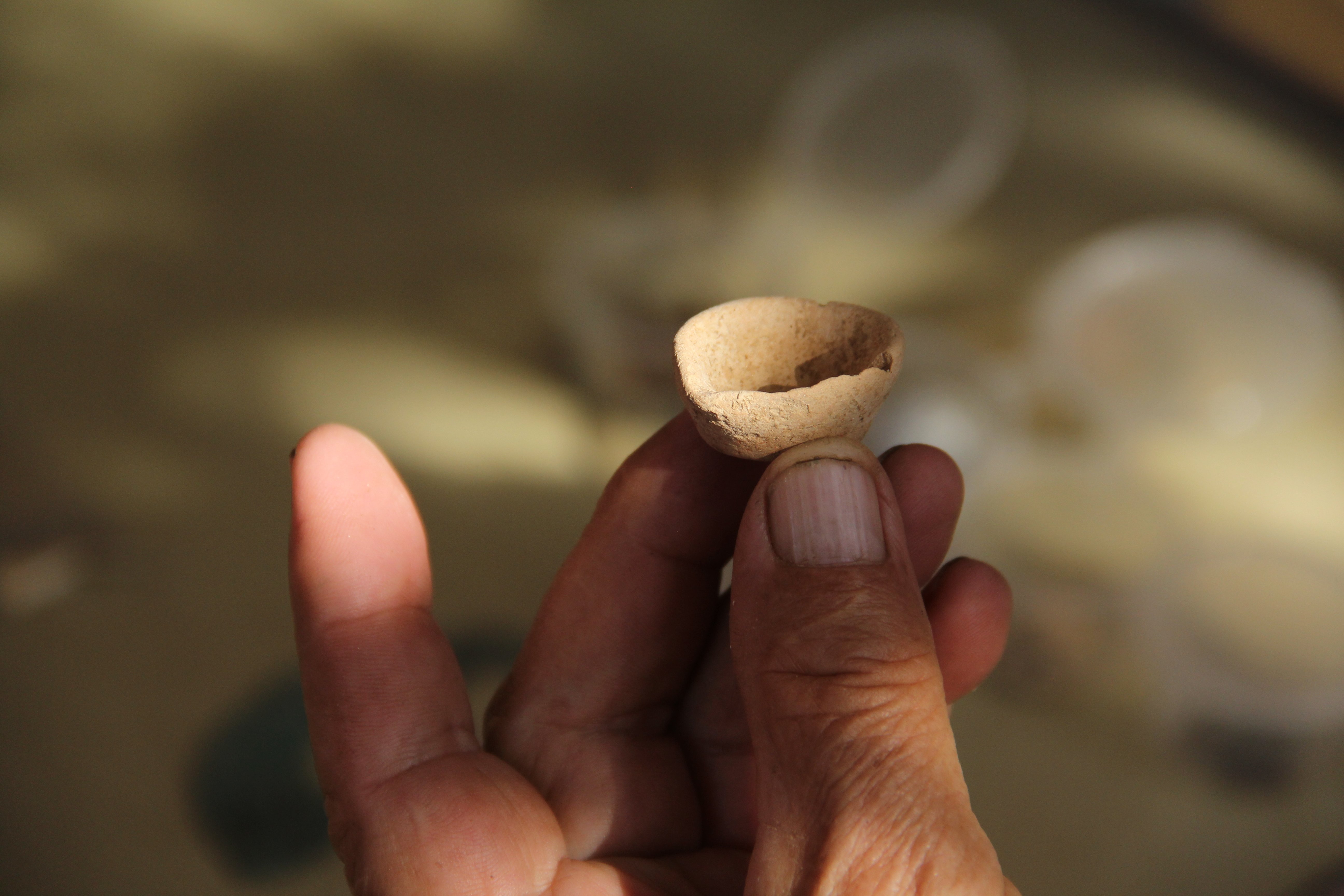
We also found a jeweler’s belt. So we can conclude that either a jeweler’s workshop existed at the temple or artisans were trained there. Globally, it is widely acknowledged that temples often housed jewelry workshops, the researcher noted.
Archaeologists also discovered a significant amount of jewelry. So when the Orda.kz journalist was enticed with talk of “treasures,” it was absolutely accurate. Among the artifacts was a small gold ornament — the only gold item found this year.
Several silver pieces were unearthed as well, including children’s earrings and inlays. There were also bronze fragments, such as pieces of a small child’s mirror.
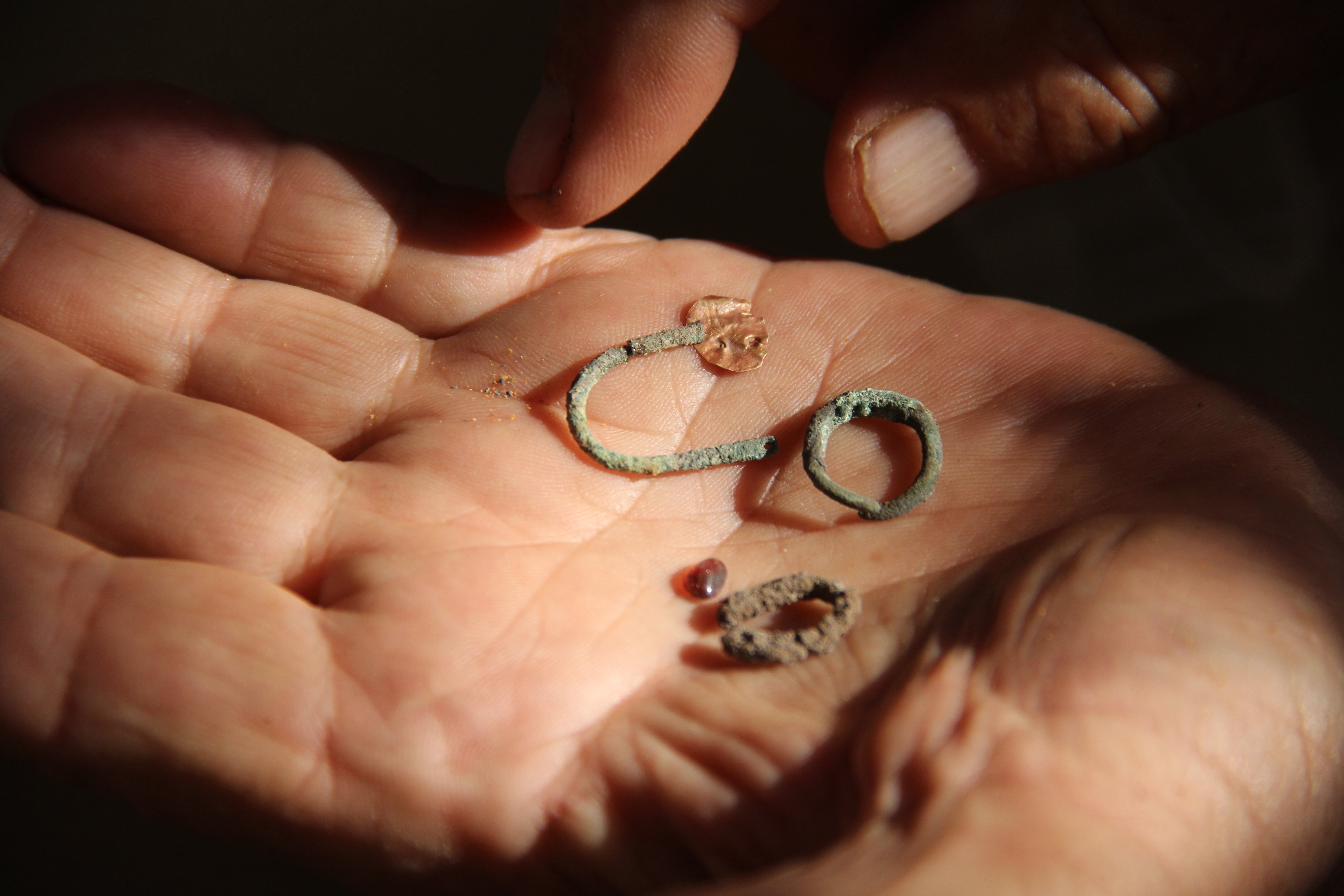
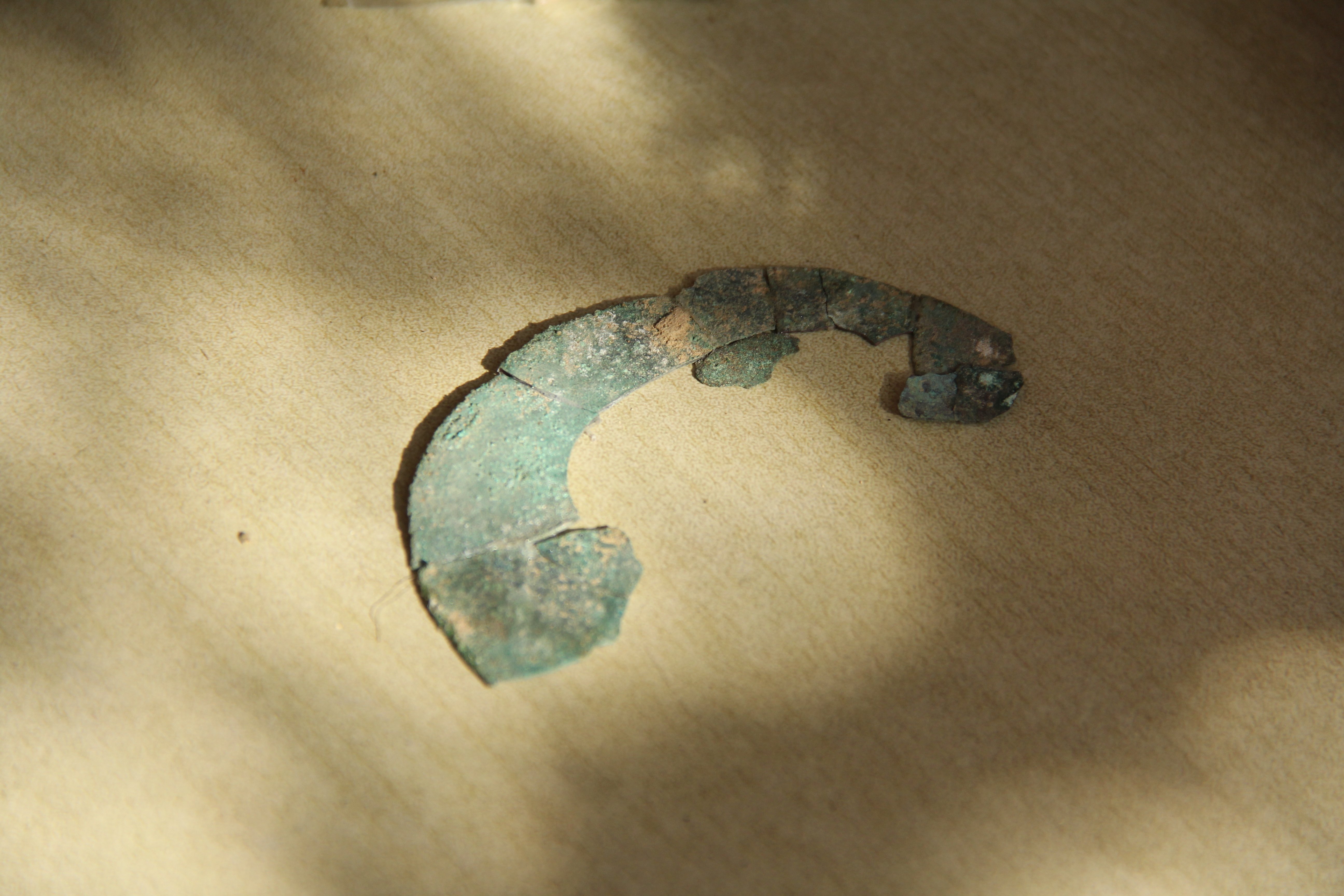
The archaeologists themselves also had to do delicate work. They uncovered a wealth of jewelry in the crypts, including items made from materials not native to the region. Among them was amber, most likely from the Baltic coast, and Egyptian faience, produced in Africa but probably crafted in the northern Black Sea region — where the Bosporan Kingdom existed at the time — before being brought to Kangju.
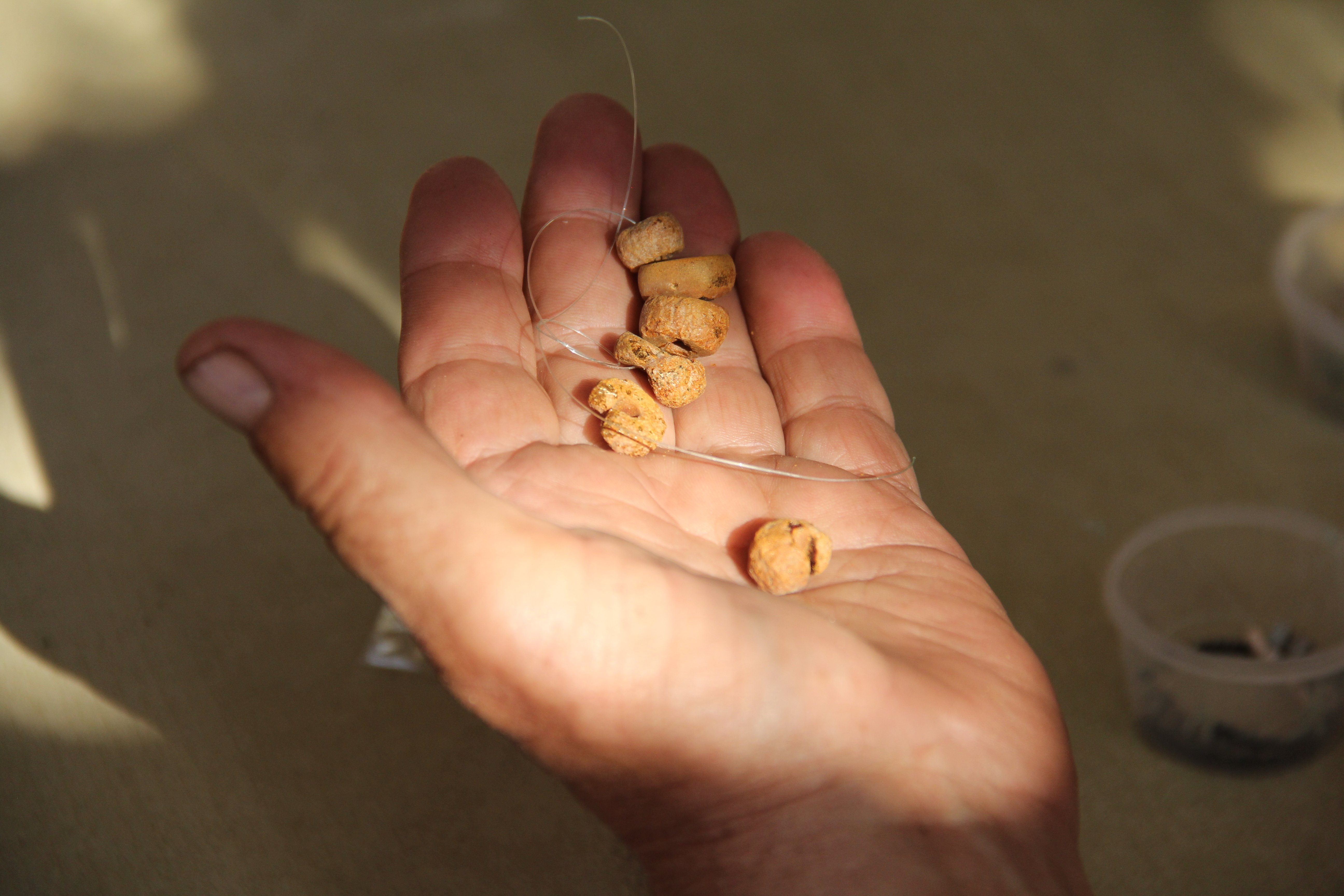
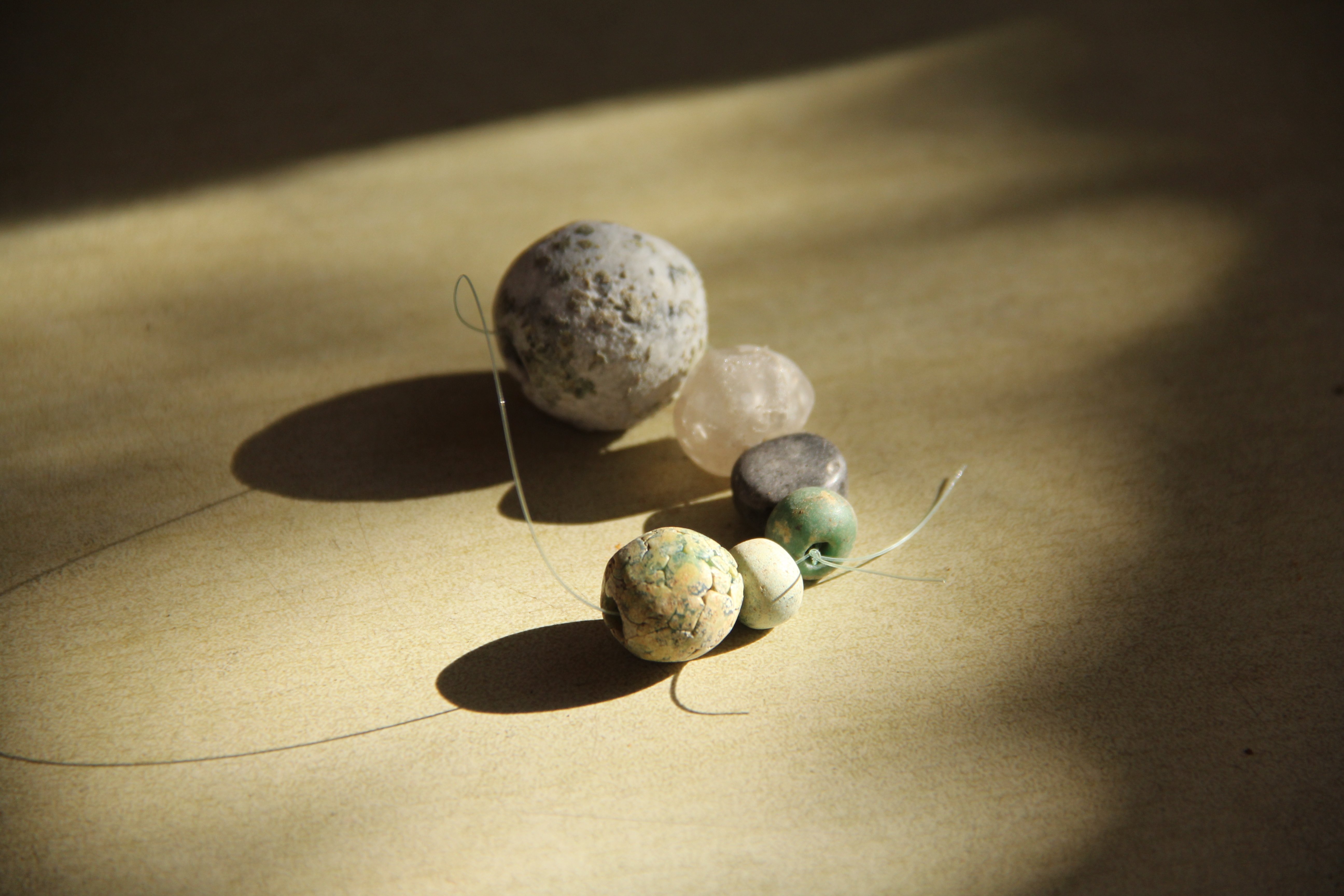
The most labor-intensive discovery of the September expedition was a necklace made of extremely fine jet beads, most likely originating from the Black Sea region.
I personally searched for these beads—I spent four days sifting sand in the crypt to collect them, said Gulmira Stamkulova.
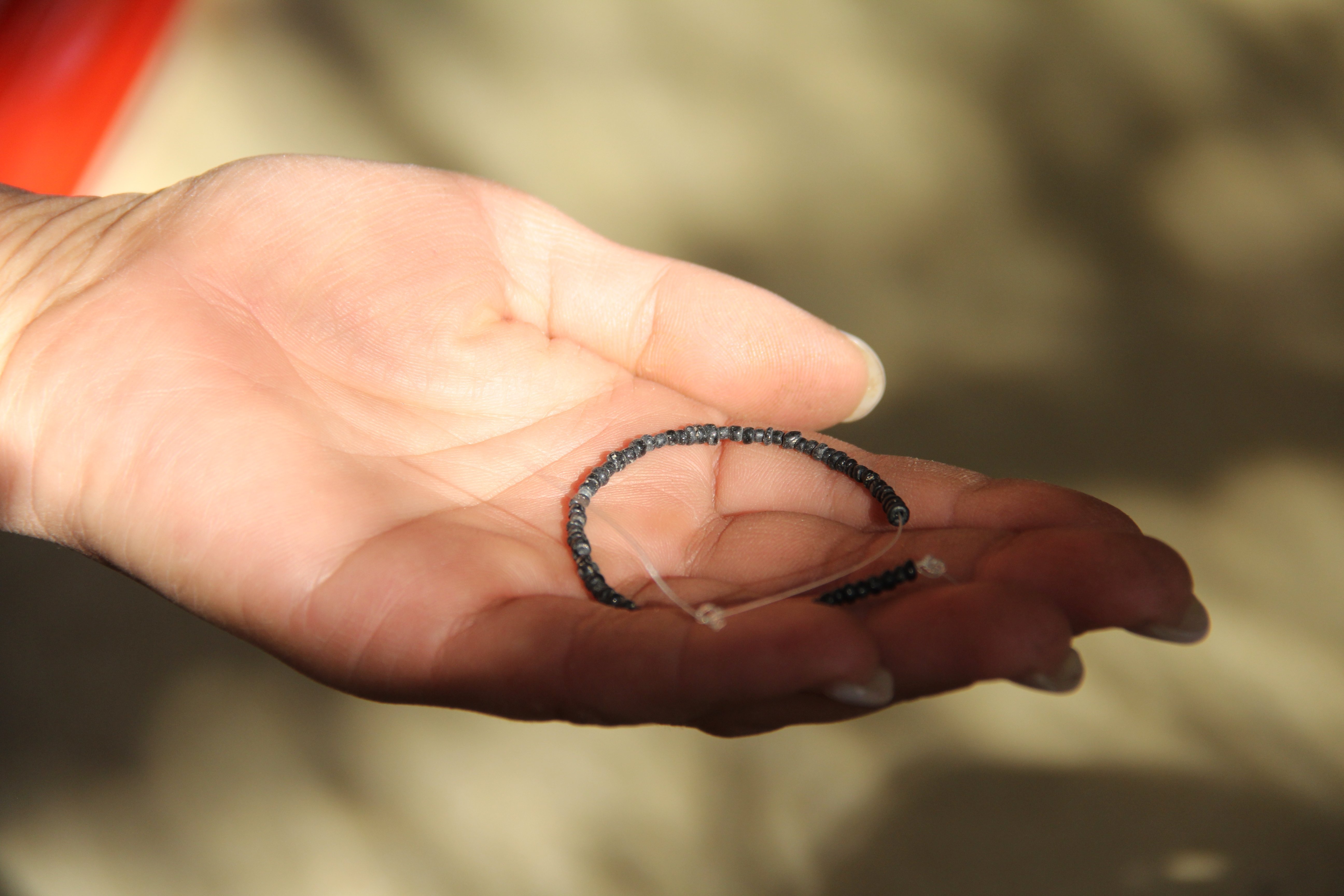
Another artifact initially seemed puzzling. It was a pointed object resembling a thick awl or something similar.
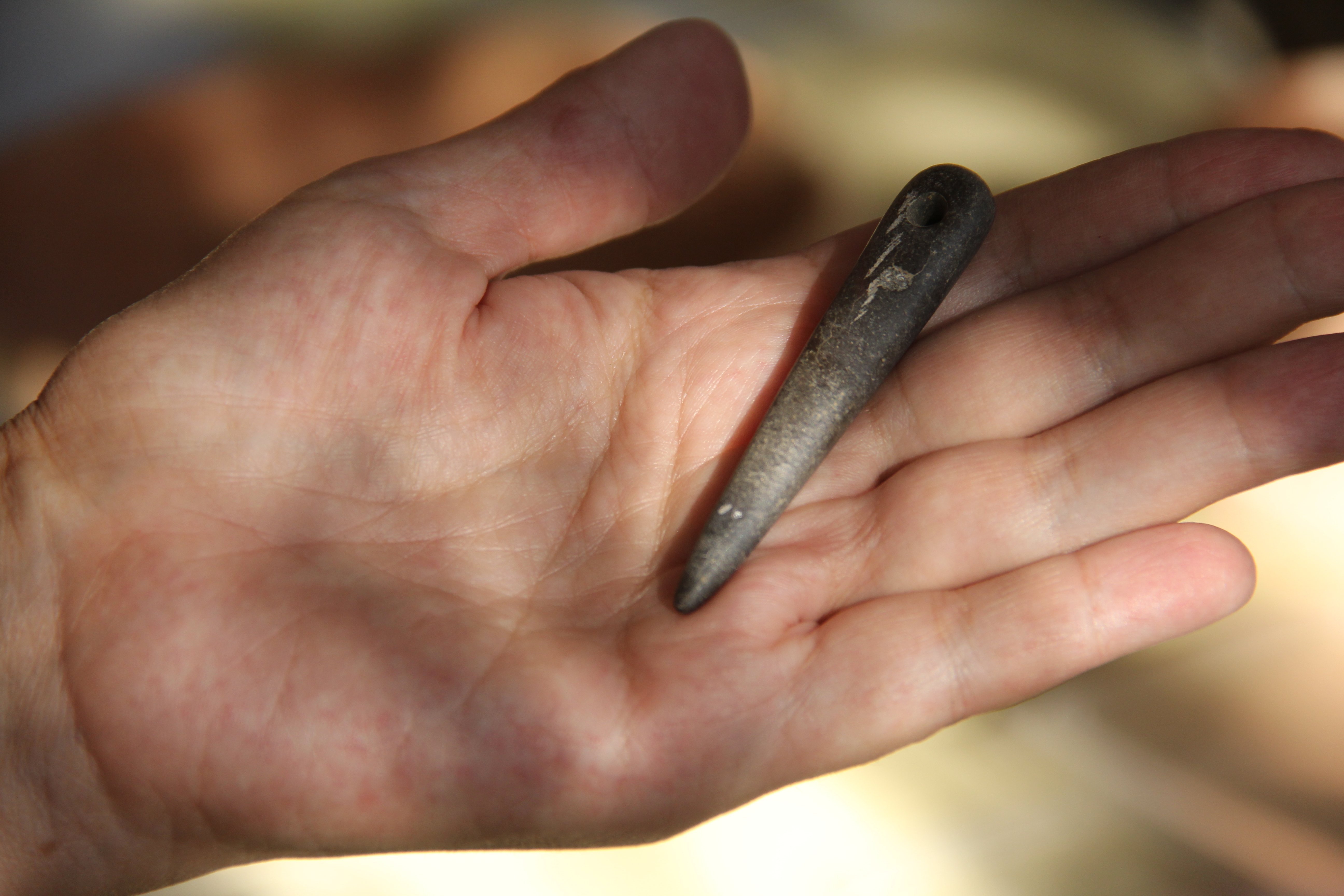
In reality, it had nothing to do with sewing. It turned out to be a 2,000-year-old cosmetic tool—kohl, essentially an ancient eyebrow pencil. Gulmira Stamkulova even demonstrated how it worked: she used it along with graphite (found in a nearby crypt) to draw eyebrows. Naturally, she didn’t use the actual archaeological material on herself— she demonstrated it on her hand.
Before leaving, Alexander Podushkin asked that we convey a message to anyone who might accidentally come across their excavation site near Qyzylkol:
We don’t close the crypts because they’re made of cement-like material. But there are remains inside, which we’ll later hand over for study. Please don’t touch them. There has already been an incident. Some people came — maybe bloggers or someone else — and tore open the bag containing the remains, breaking the skull we found. Is that even legal? I had every right to sue them, by the way. But please: just don’t touch anything here.
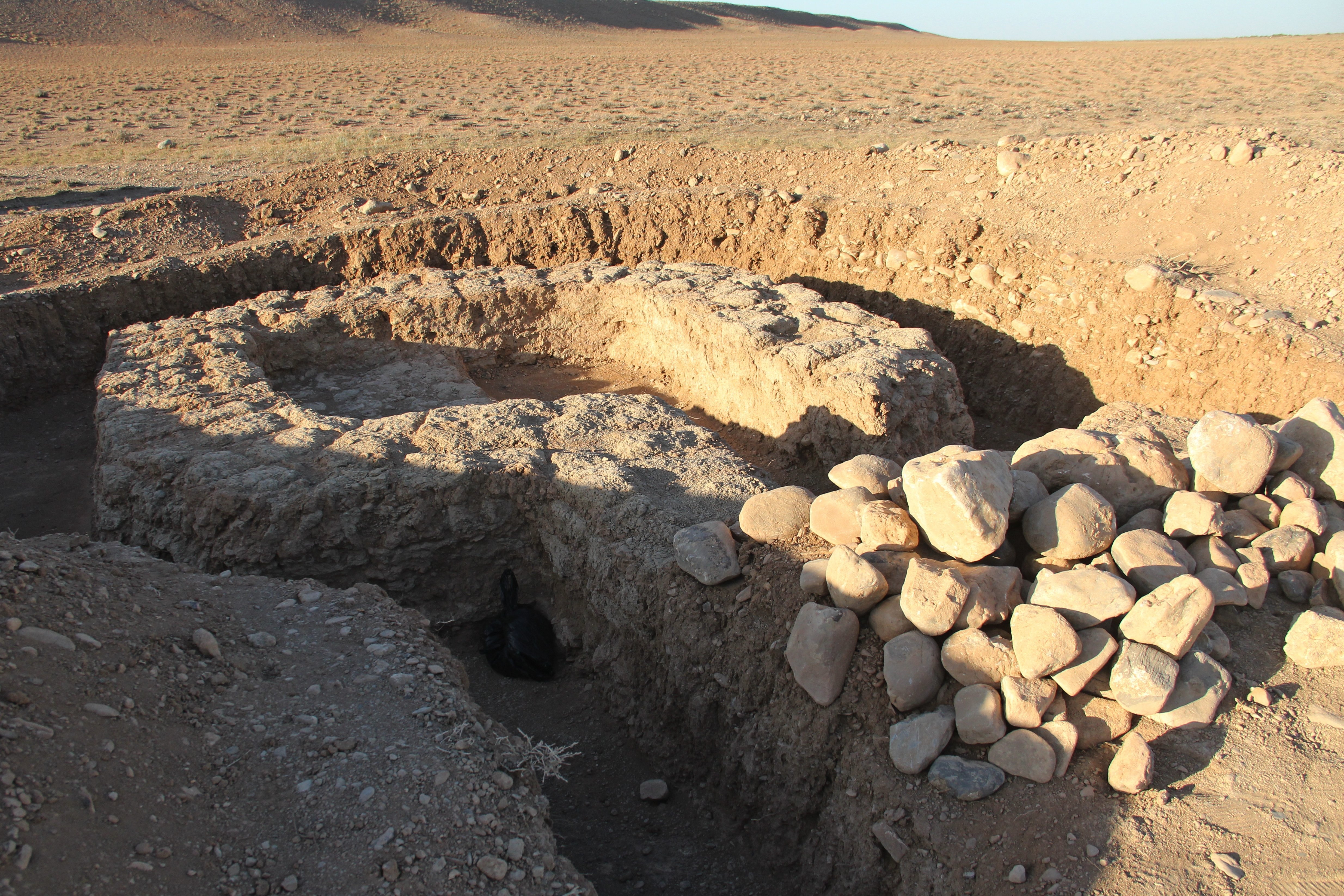
And if you suddenly feel an irresistible urge to touch something ancient, simply wait for the next archaeological season and ask to join an expedition as a volunteer.
Original Author: Igor Ulitin
Latest news
- Kadyrov Confirms Drone Damage to Grozny City
- Russia Temporarily Blocks Kazakhstan's Grain Transit, Threatening Flax Exports to Europe
- Assets of Businessman Dulat Kozhamzharov Seized Following Halyk Bank Claim
- Georgian Opposition Calls December 6 March Over Alleged Use of Chemicals at 2024 Protests
- Severe Smog Covers Oskemen
- Fire and Structural Damage Reported at Grozny City Tower Amid Drone Threat
- Pashinyan Says Foreign Influence Networks Exposed
- Kazakhstan-Based Lukoil Assets Could End Up in Hungarian Hands
- Strong Tenge Pushes Some Banks to Temporarily Stop Issuing Dollars
- Investigation Links Baimsky Project to Nazarbayev's "Wallet," Vladimir Kim
- Three Kazakhstani Nationals Arrested in Georgia Over Alleged 10,000-Ton Oil Theft
- Turkistan Region Contract for 100 Million Tenge Video Project Triggers Scrutiny
- Gennady Golovkin Becomes First Kazakhstani Honored by the International Boxing Hall of Fame
- Former Majilis Deputy Says She Was Stripped of Mandate After Criticizing Authorities
- Mangystau Authorities Investigate Death of Worker Who Fell Into Elevator Shaft
- Golovkin at World Boxing: How Kazakhstan and Saudi Arabia Are Building a New Power Structure in Boxing
- Taraz: Sentences Extended for Defendants in Group Sexual Assault Case
- Taliban Carry Out Public Qisas Execution After Teenager’s Family Killing
- CITIC Construction Responds to Activist’s Claims Over Almaty–Oskemen Highway Quality
- Kazakhstan Proposes New Law Tightening Control over Anonymous Channels

